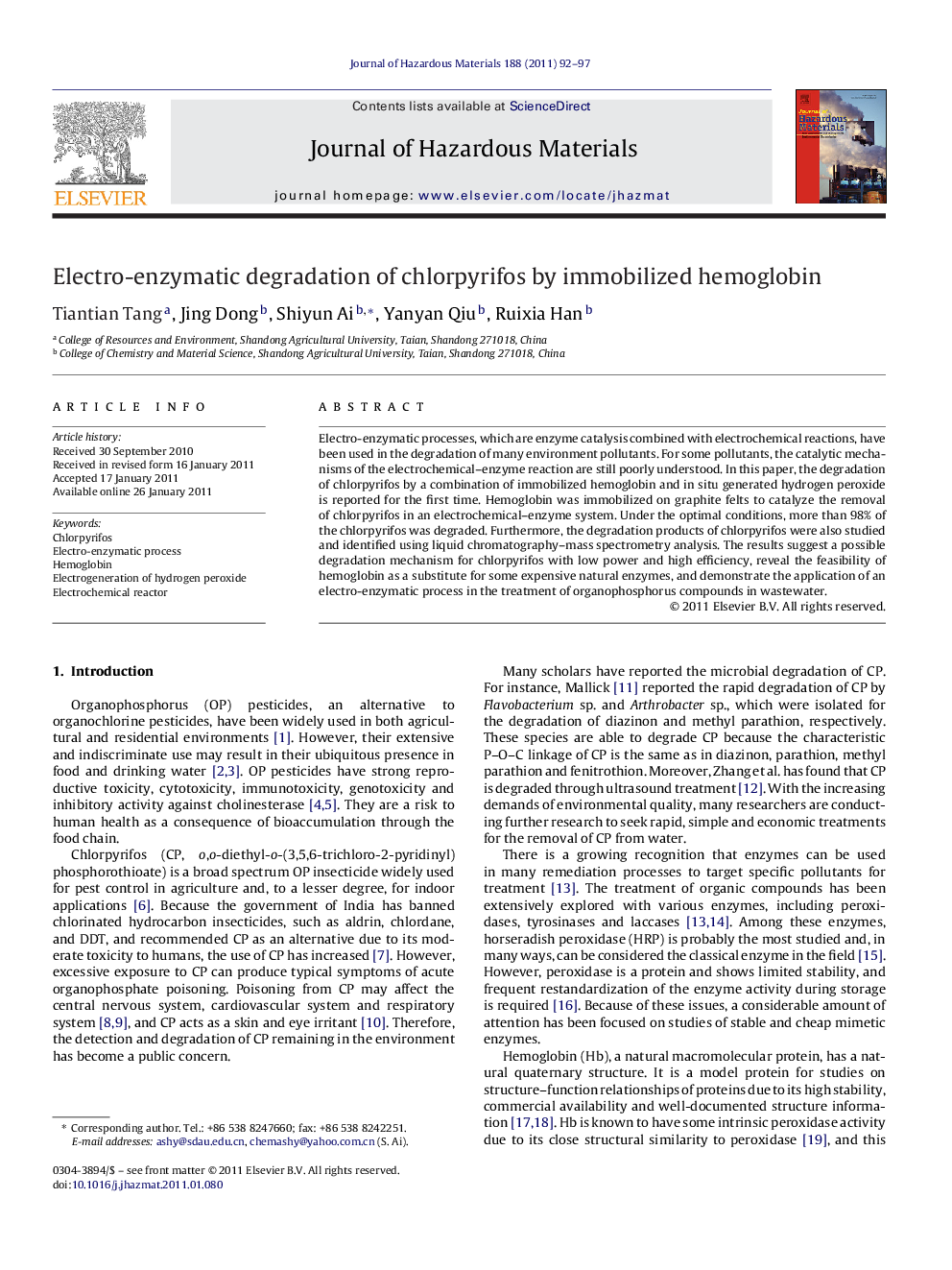| Article ID | Journal | Published Year | Pages | File Type |
|---|---|---|---|---|
| 579604 | Journal of Hazardous Materials | 2011 | 6 Pages |
Abstract
Electro-enzymatic processes, which are enzyme catalysis combined with electrochemical reactions, have been used in the degradation of many environment pollutants. For some pollutants, the catalytic mechanisms of the electrochemical-enzyme reaction are still poorly understood. In this paper, the degradation of chlorpyrifos by a combination of immobilized hemoglobin and in situ generated hydrogen peroxide is reported for the first time. Hemoglobin was immobilized on graphite felts to catalyze the removal of chlorpyrifos in an electrochemical-enzyme system. Under the optimal conditions, more than 98% of the chlorpyrifos was degraded. Furthermore, the degradation products of chlorpyrifos were also studied and identified using liquid chromatography-mass spectrometry analysis. The results suggest a possible degradation mechanism for chlorpyrifos with low power and high efficiency, reveal the feasibility of hemoglobin as a substitute for some expensive natural enzymes, and demonstrate the application of an electro-enzymatic process in the treatment of organophosphorus compounds in wastewater.
Related Topics
Physical Sciences and Engineering
Chemical Engineering
Chemical Health and Safety
Authors
Tiantian Tang, Jing Dong, Shiyun Ai, Yanyan Qiu, Ruixia Han,
